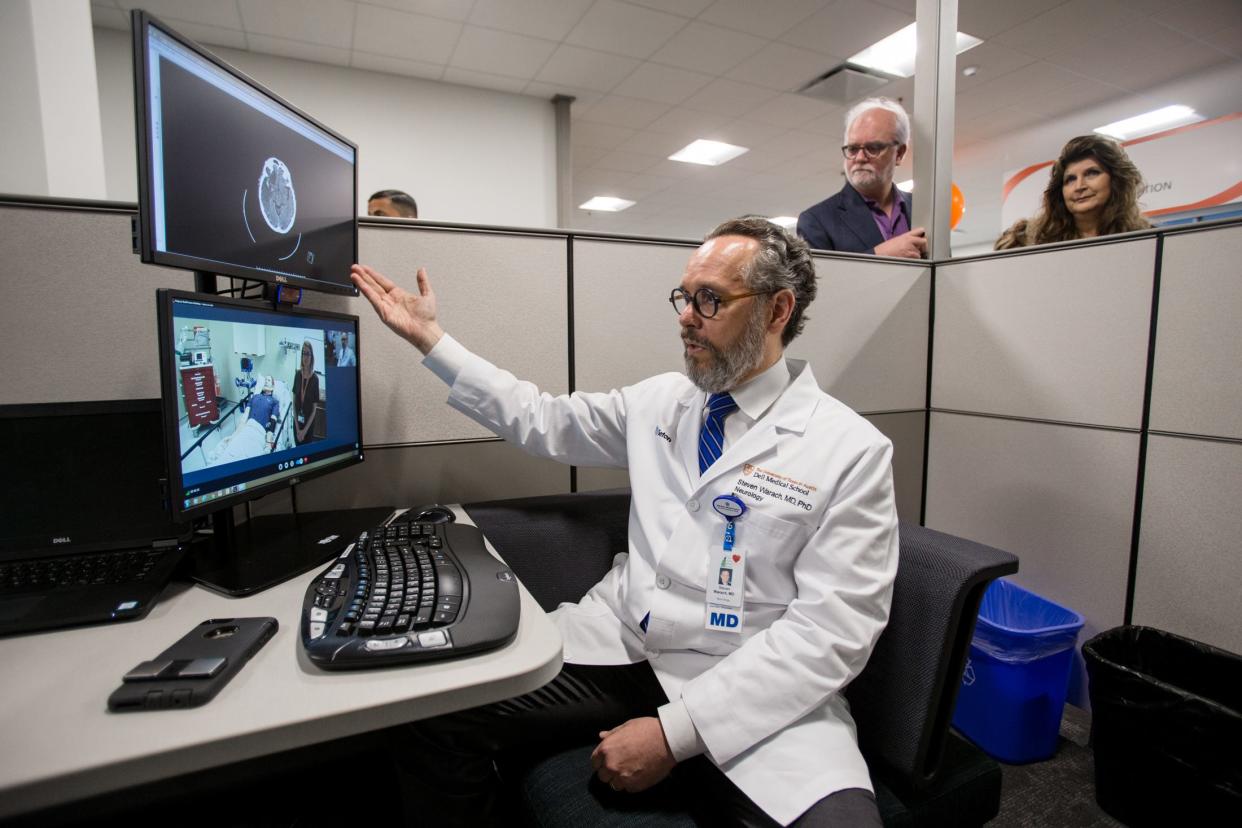Your health: Austin stroke study creates more treatments for larger strokes

If you were having a stroke and came into the emergency room, doctors would scan the blockage in your brain and measure it.
If your stroke had a small core, they might do a thrombectomy: a surgical procedure using a catheter inserted into the leg to go up into where the clot is and retrieve that clot, allowing blood to flow again. You might also get clot-busting drugs called thrombolytics.
If your blockage had a larger core, doctors might give you thrombolytics, but wouldn't do the thrombectomy. The thought was that the damage was irreparable and the thrombectomy wouldn't help.
But a new study published in the New England Journal of Medicine and done on patients in Austin at Dell Seton Medical Center, looked at doing thrombectomies on patients with blockages with larger cores.
Why stroke core size matters
The core of the blockage is the part that is thought to be damaged permanently. The area around it is thought to be area that could be improved if intervention is done within 24 hours. The thought was that strokes with larger cores wouldn't improve with a thrombectomy.
How the stroke study was done
The study was randomized, in that the researchers didn't know which group had received just medication, and which group had received the thrombectomy as well as medication, if medication was appropriate. The patients, their families and the attending doctor knew what that patient had received, and they got to decide as a team whether or not to do the thrombectomy.
What were the results?
The study concluded that the 178 patients who had thrombectomies had improved function compared with the 174 who just had medication interventions.
Of those patients who had thrombectomies, 20% had functional independence and the medicine-only group had 7% functional independence. The mortality rates were similar in both groups. There were some risks that only happened in the patients who received thrombectomies, such as dissection or the perforation of a blood vessel.
How this study will be used
This study, said Dr. Steven Warach, a vascular neurology specialist and a professor at Dell Medical School at the University of Texas, is about changing who the ideal patient is for a thrombectomy.
"We want to make sure if we can help anybody, let's change the ideal patient," Warach said.
The study has been replicated in other parts of the world including China, Japan, Australia and New Zealand with the same results. The findings already have been adopted to change the guidelines for who can receive a thrombectomy.
This study shows that "there's a lot of brain potentially to save," he said.
More work to be done
This study looked at ischemic strokes in the internal carotid artery or the first segment of the cerebral artery. Warach said further study needs to be done on thrombectomies in strokes in smaller arteries.
He has seen the field advance in the past 30 years. "When I was a resident, we didn't have to rush to go to the emergency room," he said. "We didn't have anything to do. Now we can return people to the way they were before they had a stroke."
How to avoid a stroke
"What we do in a stroke emergency is only the beginning of stroke care," Warach said. After the stroke, it's about reducing stroke risks and getting on a good medication regimen.
"80% of strokes are preventable with exercise and diet," Warach said.
Reduce high blood pressure, control cholesterol, avoid heart disease and live an active lifestyle instead of a sedentary one, Warach said.
Research: Dell Medical School, Ascension Seton help reshape standards for stroke drug treatments
How to spot a stroke
Timing is still very important to being able to recover from a stroke. The quicker you can get care, the more options for treatment you will have.
Know the signs of a stroke.
Remember BE FAST in English:
Balance: Loss of balance, dizziness, headache
Eyes: Blurred vision or double vision
Face: One side is drooping
Arms: Arm or leg weakness
Speech: Difficulty speaking, slurred speech
Time: Time to call for an ambulance immediately.
Andar: Tiene dificultad para caminar? Tiene problemas con el equilibrio? (Do they have difficulty walking? Do they have problems with balance?)
Hablar: Tiene dificultad para hablar o entender? Usa palabras que no tienen sentido? (Do they have difficulty speaking or understanding language? Do they use words that don't make sense?)
Ojos: Tiene algün cambio de vista? Tiene visiön doble? Tiene dificultad para ver con ambos ojos? (Do they have some change in vision? Do they have double vision? Do they have difficulty seeing with both eyes?)
Rostro: Tiene la mitad del rostro caido? Tiene un repentino dolor de cabeza como nunca se ha sentido? (Do they have one-sided facial droop? Do they suddenly have the worst headache of their life?)
Ambos Brazos: Tiene dificultad para levantar un brazo o una pierna? Tiene debilidad en un brazo o una pierna? (Do they have difficulty lifting an arm or a leg? Do they have weakness in an arm or a leg?)
Previous research: Dell Medical School at the University of Texas researches stroke medication tenecteplase
This article originally appeared on Austin American-Statesman: Ascension Seton, Dell Medical School study larger strokes in Austin

